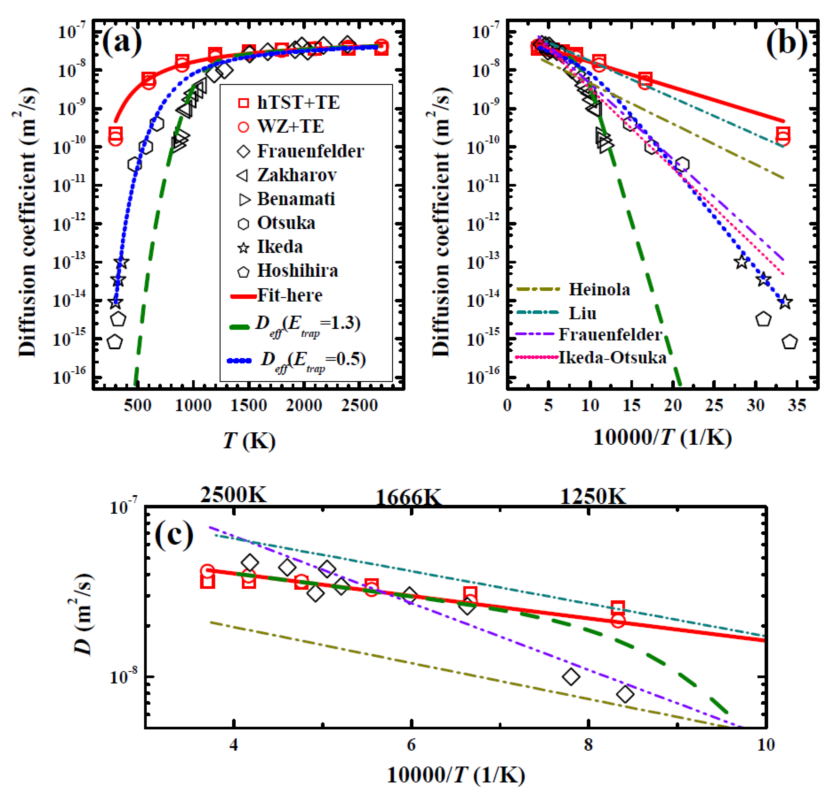Recently, new progress has been made by the researchers from Institute of Solid State Physics, collaborating with the researchers from Insitute of Plasma Physics. The new progress has been published in Acta Materialia 84 (2015) 426-435.
Tungsten is the primary candidate for the plasma-facing material (PFM) of fusion reactors due to its low hydrogen retention, high melting point, high thermal conductivity and low sputtering yield for light elements. In its role as a PFM, tungsten would be subject to high heat and particle flux of hydrogen escaping from the plasma, which would congregate on the tungsten surface or penetrate through it and diffuse deeper into the bulk. Hydrogen retention in tungsten leads to modification of the material’s physical and mechanical properties, such as assisting superabundant vacancy formation, inducing embrittlement, and reducing mechanical strength. More importantly, hydrogen retention in PFMs has been identified as a major safety and economic concern in fusion reactors. Thus, the investigation of hydrogen retention in tungsten is an important task for fusion research. To study hydrogen retention in tungsten, knowledge of hydrogen solution and diffusion is fundamental and essential, but data are scarce and largely scattered until now. We perform a series of first-principles calculations to predict the dissolution and diffusion properties of interstitial hydrogen in tungsten and the influence of temperature and the defect-trapping effect. The interstitial hydrogen always prefers the tetrahedral site over the temperature range 300-2700 K, and its migration path mainly advances via the nearest-neighboring tetrahedral sites. Our results reveal that both solution and activation energies are strongly temperature dependent. The predicted solubility and diffusivity show good agreement with the experimental data above 1500 K, but present a large difference below 1500 K, which can be bridged by the trapping effects of vacancies and natural trap sites (see Fig. 1). The present study reveals a dramatic effect of temperature and defect trapping on the hydrogen solution and diffusion properties in tungsten, and provides a sound explanation for the large scatter in the reported values of hydrogen diffusivity in tungsten.
http://www.sciencedirect.com/science/article/pii/S1359645414008039
The above investigations are supported by the National Magnetic Confinement Fusion Program, National Natural Science Foundation of China, and Research Program of Chinese Academy of Sciences.

Fig. 1 Diffusivity of hydrogen in tungsten: (a) diffusion coefficient vs. temperature; (b) diffusion coefficient vs. the reciprocal of temperature; (c) diffusion coefficient vs. the reciprocal of temperature for the hightemperature range.